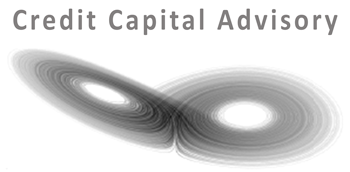The relationship between credit and capital is one of the most important drivers of an economy. Unfortunately this relationship is too often ignored by investors, bankers and policy makers – sometimes resulting in large unexpected losses. Like most relationships in an economy, credit and capital do not follow a linear and predictable path. Indeed economies can move from a stable and apparently linear state to one which displays chaotic characteristics due to shifting expectations. Accepting the nature of an economy’s unpredictability is critical if investors want to preserve the value of their capital through time. Moreover, acknowledging that credit innovation is a key driver of capital values has implications for policy makers to help boost flagging and failing economies.
The capital in capitalism
Capital assets include all stages of a production process which are required to generate final consumption goods and services. A company is therefore little more than a conglomeration of capital assets generating an income stream which is meant to flow back to the shareholders. Investors in companies of course want to see the return on capital increasing through time which can be achieved in two general ways. Firstly, the cost of credit can fall thus leading to an increase in profits. Secondly, improvements can be made to the production process generating an increase in the rate of productivity. If the returns on capital increase it acts as a stimulus on the economy which increases the demand for credit. This in turn becomes a reflexive process leading to the emergence of innovative and sometimes complex credit instruments to ensure that the demand for credit is met. Thus the general trajectory of an economy through time can be understood in relation to the demand for credit which is a function of changes in the expected rate of profit.
Unfortunately for investors this relationship through time is neither linear, predictable nor based on any natural tendency towards equilibrium. This of course makes most econometric attempts to predict investment returns problematic. Although it is feasible to monitor the broad trend of the business cycle, changes in the cycle itself remain unpredictable due to the sensitivity of an economy to small changes in initial conditions. In the world of economics this is largely down to changing expectations which do not behave in linear and predictable ways. The reality is that people’s expectation of the future are based on what they are experiencing. When things are booming, expectations continue their strong upward trajectory. Booms by definition are unsustainable with the reversal taking place once expectations have started to shift.
It’s a mad chaotic world
One way of thinking about this phenomenon is to reflect on the revolution that has been taking place in physical sciences over the last few decades. Physicists, biologists and chemists traditionally were taught to think about the world in a linear way, mainly it seems because solving non-linear equations was substantially more complicated. However, complex systems in the physical and social spheres are rarely linear. An economy is an example of a highly complex system with millions of economic agents constantly making decisions with different time horizons. The Lorenz attractors pictured throughout this website describe the trajectory of a complex system; a system which demonstrates a pattern, but one which is also non-linear and unpredictable.
The relationship between credit and capital through time provides investors with the ability to avoid unexpected losses and preserve their capital. Moreover, acknowledging that credit innovation drives capital accumulation has implications for policy makers, who have largely floundered as capital values have fallen. The continuing curtailment of credit innovation over the last few years has reinforced negative expectations about the future resulting in falling demand. Credit and capital provide a great deal of insight into the future general trajectory of an economy to those who care to take a look.
